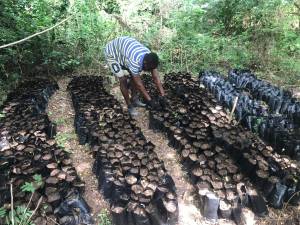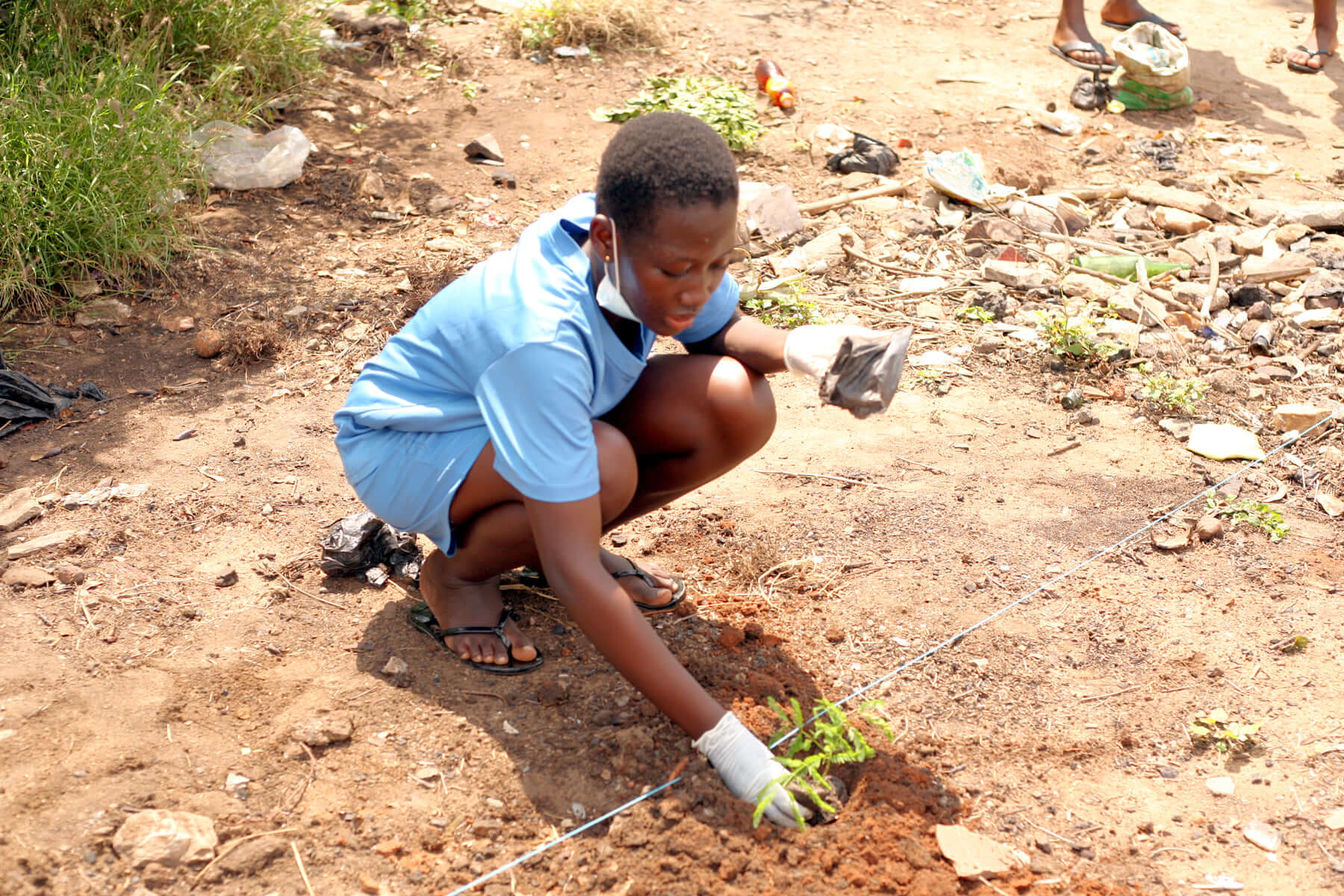Urban areas across Africa are experiencing unprecedented climate impacts as human activities—including deforestation, industrial emissions, and rapid urbanization—transform our cities. Where lush forests once thrived, concrete towers and commercial complexes now dominate the landscape.
This dramatic shift demands urgent climate action, and one of the most effective solutions gaining momentum is community tree planting.
The benefits of trees are enormous. Trees are natural carbon sinks, absorbing CO2 emissions and storing carbon. Trees provide oxygen to help improve air quality, conserve water, preserve soil, and support wildlife, among many other benefits.

Tree nursery by Keep Ghana Beautiful
This blog focuses specifically on Accra, Ghana’s bustling capital city. As West Africa’s major economic hub, Accra exemplifies how urban centers face escalating climate challenges. Rising temperatures force families and businesses to rely heavily on air conditioning and fans, driving up electricity costs significantly. Meanwhile, seasonal flooding wreaks havoc across neighborhoods, costing the government millions of Ghana cedis annually in emergency response and infrastructure repairs—expenses that continue climbing each year.
As the negative impacts of climate change are staring us in the face and threatening our very existence, the promotion of community tree planting as a climate change technique must be embraced by all.
Government agencies responsible for the protection of the environment, metropolitan, municipal and district assemblies together with NGOs need to collaborate more to take the campaign a notch higher.
Yes, there have been many tree planting initiatives by many individuals and organisations, but the big question is how sustainable they have been. Is there a way of accessing the progress of trees planted in the past five to six years? I believe this will go a long way in influencing strategy for current and future planting initiatives to achieve desired results.
Community participation is essential for successful tree planting initiatives. However, Ghana’s growing trend toward gated and fenced residential communities presents a significant outreach challenge. As more families choose secured housing, traditional door-to-door campaigns become increasingly difficult. To overcome these accessibility barriers, I recommend the following strategies:
1. Tree planting initiatives must design flyers and brochures and drop them at the gates of these individuals with contact numbers and emails on them.
2. More social media campaigns targeting these households in gated communities.
3. A good collaboration between NGOs and MMDAs for logistical support in creating public awareness.
One aspect worth looking at in the promotion of community tree planting is getting the MMDAs to include tree planting as a requirement for granting building permits. Every developer must make a space for a tree or two as part of their design plans.
In conclusion, I want to make a strong case for households and offices to consider planting coconut, mango, orange, pear, or any other fruit-bearing tree in the frontage of their homes and offices. The immediate benefits are obvious while contributing our quota in mitigating climate change impacts.
Let us all get involved in the promotion of community trees, as our very existence depends on it.
By Gilbert Horlu
Project Manager- Keep Ghana Beautiful

